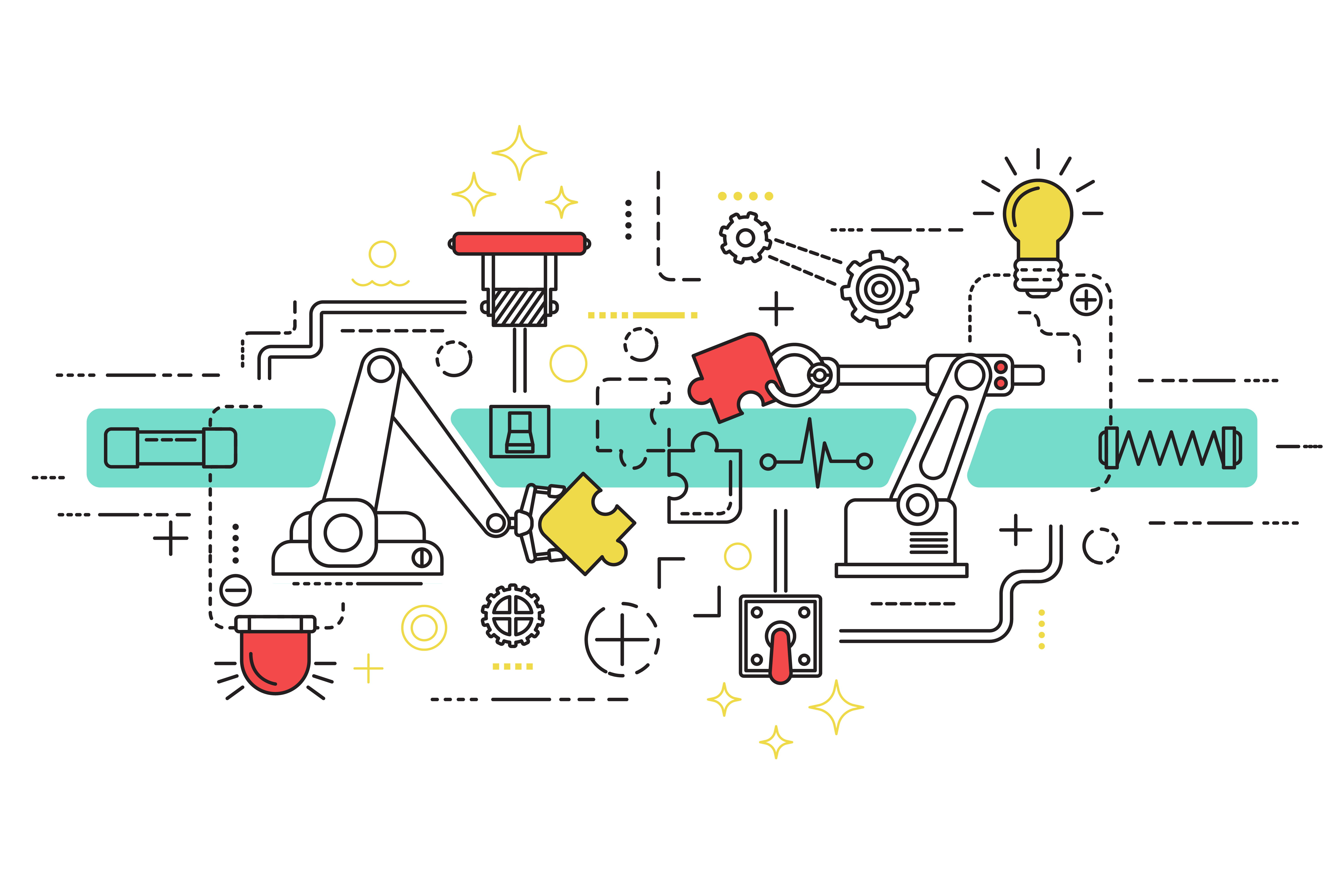APPROACH TO ART AND TECHNOLOGY CONCEPTS AND ITS INTEGRATION IN STEAM
Main Article Content
Abstract
This article arises from the literary review of the theoretical framework, for the master's thesis called, STEAM Proposal to develop cognitive flexibility, here the various authors' theories, who have addressed the key concepts of this work, art, education, STEAM are exposed and technology. Initially, a historical journey is presented to distinguish and exalt the process of art and technology in society and school. The importance of attending to artistic actions from childhood and adolescence is also mentioned, thereby reaffirming the value of adding art to STEM, with a humanistic approach. In addition, some examples of experiences and aspects of STEAM education are presented.
References
Álvarez, E. (2010). Creatividad y pensamiento divergente. Desafío de la mente o desafío del ambiente. Inter AC. https://bit.ly/3C1pYw3
Buch, T. (1999). Sistemas tecnológicos. Contribuciones a una teoría general de la artificialidad. Aike Editores.
Bunge, M. (1963). Tecnología, ciencia y filosofía. Anales de la Universidad de Chile, (126), 64-92. https://anales.uchile.cl/ index.php/ANUC/article/view/22658
Chung, C. C. (2014). Integrated STEAM education through Global Robotics Art Festival (GRAF). En IEEE Integrated STEM Education
Conference (pp. 1-6). IEEE. https://doi. org/10.1109/ISECon.2014.6891011
Cilleruelo, L. y Zubiaga, A. (2014). Una aproximación a la Educación STEAM. Prácticas educativas en la encrucijada arte, ciencia y tecnología. Jornadas Psicodidácticas, 1-18. https://bit.ly/3WN5PSn
Collazos, C. A. y Mendoza, J. (2006). Cómo aprovechar el “aprendizaje colaborativo” en el aula. Educación y Educadores, 9(2), 61-76. Recuperado: https://www.redalyc. org/articulo.oa?id=83490204
Constantino, T. (2018). STEAM by another name: transdiciplinary practice in art and design education. Arts Education Policy Review, 119(2), 100-106. https://doi.org/10.1080/1063291 3.2017.1292973
Cook, K. L., Bush, S. B., & Cox, R. (2017). Engineering encounters: From STEM to STEAM. Science and Children, 54(6), 86-93.
Gardner, H. (1997). Arte, mente y cerebro. Una aproximación cognitiva a la creatividad (7ª. ed.). Paidos. Gombrich, E. H. (1995). La historia del arte (15ª. ed.). Editorial Diana.
Jho, H., Hong, O., & Song, J. (2016). An analysis of STEM/ STEAM teacher education in Korea with a case study of two schools from a community of practice perspective. EURASIA. Journal of Mathematics, Science and Technology Education, 12(7), 1843-1862. https://doi.org/10.12973/ eurasia.2016.1538a
Khine, M., & Areepattamannil, S. (eds.). (2019). STEAM educación. Theory and practice. Springer. https://doi. org/10.1007/978-3-030-04003-1
Larraz Rábanos, N. (2013). Desarrollo de la creatividad artística en la educación secundaria. Journal for Educators, Teachers and Trainers, 5(1), 151–161. Recuperado: http://hdl.handle. net/10481/39402
Li, K.-C., & Wong, B. T-M. (2020). Trends of learning analytics in STE(A)M education: a review of cases studies. Interactive technology and Smart Education, 17(3), 323-335. https:// doi.org/10.1108/ITSE-11-2019-0073
López Morocho, L. R. (2021). Reflexiones sobre el problema de la verdad, la ciencia y la tecnología y sus implicaciones en el campo educativo. Sophia. Colección de Filosofía de la Educación, (31), 137-164. https://doi.org/10.17163/soph. n31.2021.05
López Simó, V., Couso Lagarón, D. y Simarro Rodríguez, C. (2020). Educación STEM en y para el mundo digital. RED: Revista de Educación a Distancia, 20(62), 1-29. https://doi. org/10.6018/red.410011
Martinez, J. E. (2017). The search for method in STEAM education. Springer International Publishing. https://doi. org/10.1007/978-3-319-55822-6
Mitcham, C. (1986). ¿Qué es la filosofía de la tecnología? Ciencia y Sociedad, 11(3), 244-263. https://doi.org/10.22206/ cys.1986.v11i3.pp244-63
Ochoa-Duarte, A. L., León Rojas, A. L., & Reina Rozo, J. D. (2021). STEAM, society and university outreach in Colombia: A preliminary proposal from Buen Vivir. Sociology & Technoscience, 11(extra 1), 55-82. https://doi. org/10.24197/st.Extra_1.2021.55-82
Palacios, L. (2006). El valor del arte en el proceso educativo. Reencuentro, (46), 1-22. https://www.redalyc.org/pdf/340/ 34004607.pdf
Peña Rodríguez, F. y Otálora Porras, N. (2018). Educación y tecnología: problemas y relaciones. Pedagogía y Saberes, (48), 60-70. https://doi.org/10.17227/pys.num48-7373
Perales Palacios, F. J. y Aguilera, D. (2020). Ciencia-TecnologíaSociedad vs. STEM: ¿evolución, revolución o disyunción? Ápice. Revista de Educación Científica, 4(1), 2-15. https:// doi.org/10.17979/arec.2020.4.1.5826
Root-Bernstein, R., Allen, L., Beach, L., Bhadula, R., Fast, J., Hosey, C., Kremkow, B., Lapp, J., Long, K., Pawelec, K., Podufaly, A., Russ, C., Tennant, L., Vrtis, E., & Weinlander, S. (2012) Arts foster scientific success: Avocations of nol, National Academy, Royal Society, and Sigma Xi members. Journal of Psychology of Science and Techonology, 1(2), 51- 63. https://bit.ly/3GjmqaK
Sánchez Carlessi, H. (2017). Arte, creatividad y desarrollo humano. Tradición, (17), 18-24. https://doi.org/10.31381/ tradicion.v0i17.1362
Shiner, L. (2015). La invención del arte. Una historia cultural. Paidós. Reseña de Vanessa Freitag. Alteridades, 25(49), 129-133. https://www.scielo.org.mx/pdf/alte/v25n49/ v25n49a12.pdf
Sousa, D. A., & Pilecki, T. (2013). From STEM to STEAM: Using brain-compatible strategies to integrate the arts. Corwin Press.
Taylor, P. C. (2016). Why is a STEAM curriculum perspective crucial to th 21sy century?
Yakman, G., & Lee, H. (2012). Exploring the exemplary STEAM education in the U.S. as practical education framework for Korea. Journal of the Korean Association for Science Education, 32(6), 1072-1086. https://www.koreascience. or.kr/article/JAKO201213459004832.pdf






